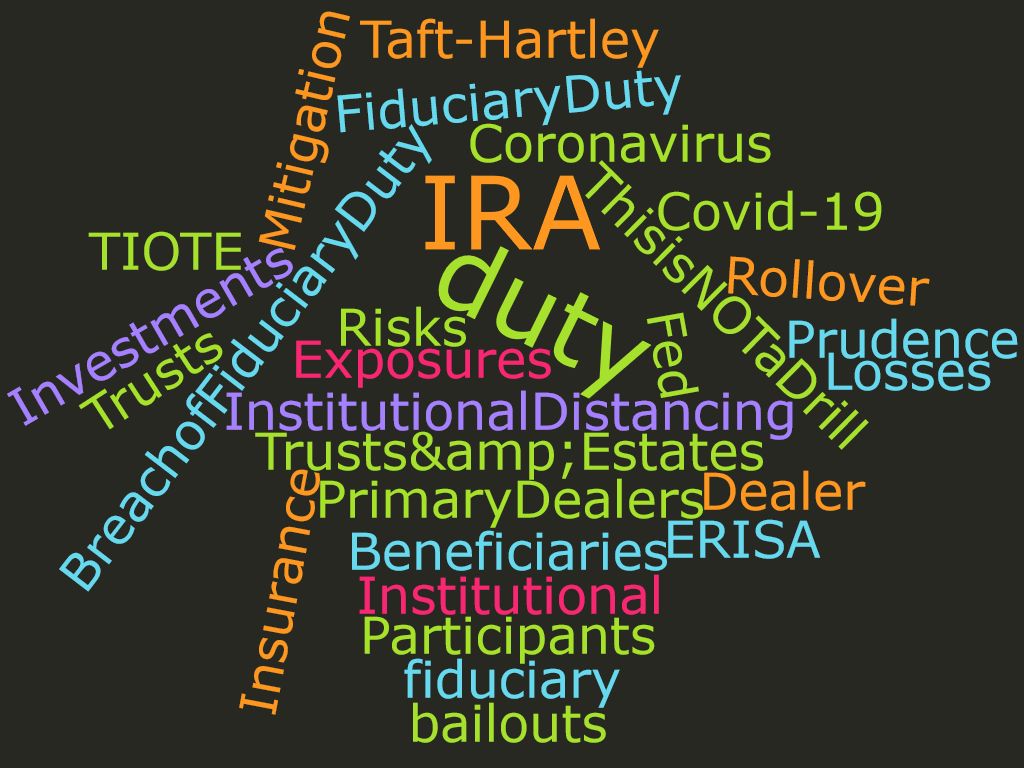- United States Constitution
- Congress
- Flag of the United States
- Federal Reserve Board
- SEC (Securities Exchange Commission)
- FASB (Financial Accounting Standards Board)
- PCAOB (Public Company Accounting Oversight Board)
- SIPC (Securities Investor Protection Corp.)
- NASSAA (North American State Securities Administrators Association)
- NYSE (New York Stock Exchange)
- FINRA (Financial Industry Regulatory Association, formerly the NASD)
- MSRB (Municipal Securities Rulemaking Board)
- FINRA Members (otherwise known as broker dealers, stock brokerage firms, etc.)
- Member’s Legal, Compliance Departments; National, Regional and Branch Sales Offices
- Member’s Registered Representatives (known by various titles like Stockbroker, Series 7, etc.)
Believe it or not, the above is not even a complete list of investor protections. It’s 2014, still trustees of trust accounts lack protection afforded by a fiduciary standard from members of FINRA. It’s over four years ago since SEC Chair, Ms. Schapiro told the FCIC (Financial Crisis Inquiry Commission):
The Commission has been closely examining the broker-dealer and investment adviser regulatory regimes and assessing how they can best be harmonized and improved for the benefit of investors. Many investors do not recognize the differences in standards of conduct or the regulatory requirements applicable to broker-dealers and investment advisers. When investors receive similar services from similar financial service providers, it is critical that the service providers be subject to a uniform fiduciary standard of conduct that is at least as strong as exists under the Investment Advisers Act, and equivalent regulatory requirements, regardless of the label attached to the service providers.
Given Ms. Schapiro’s statement under oath that “many investors do not recognize the differences in standards of conduct” implies who does recognize the difference. Members of FINRA including the largest national brokerage firms do recognize the differences and have resisted a fiduciary standard until this day.
Numerous laws have been enacted since the 1970’s. It’s forty years since the passage of ERISA (1974), twenty years since the promulgation of the Uniform Prudent Investor Act (1992) and over eighteen years since California adopted the Prudent Investor Act (1996). And it’s over twenty years since Standard & Poors introduced the SPDR (spider), traded under the ticker SPY (NYSE: SPY) whose expense ratio is 9 basis points or 0.009 and it’s almost forty years since Vanguard introduced the S&P 500 index fund, it’s twenty – two years since Vanguard introduced the Vanguard Total Stock Market Index Fund whose expense ratio is 17 basis points or 0.0017. Perhaps that’s why certain members are resisting the fiduciary standard?
In contrast, when Wall St and certain FINRA members, including the five former CSE’s (Consolidated Supervised Entities) needed money to stay afloat in 2008 they got what they needed in a matter of weeks. Coincident to the SEC’s termination of the CSE program, only two were allowed to switch to bank holding companies (allowing them to borrow from the Fed); Bear Stearns, Lehman Brothers and Merrill Lynch were not permitted to do so. Bloomberg estimated support at $7.7 Trillion, since then, the Federal Reserve has provided additional support (and indirectly to certain of the same members) with a $4 Trillion investment in Treasury bonds and mortgage backed securities through the unprecedented Large Scale Asset Purchase Program called Quantitative Easing. When they were asked what they did with their allocation from the $350 Billion TARP money (Troubled Asset Relief Program), large bank CEOs said “we don’t know or can’t say.” These appeared in CNN Money and Rolling Stone.
Perhaps this is too obvious to point out, but beneficiaries of trust and fiduciary accounts are entitled to, deserve and actually need protection. They need it because they are depending on members placing their interests first.
Due Diligence Steps for Trustees and Beneficiaries
- Trustees should only use investment advice from advisers who agree to a fiduciary standard
- Beneficiaries should confirm that trustees have trust assets and accounts only at firms that agree to a fiduciary standard
- In performing due diligence, evaluation or ways to protect trust assets, trustees and beneficiaries may consult the Fiduciary Expert
- Trustees and trust beneficiaries may also wish to check out McFideo™
After all, investors, trustees and trust beneficiaries likely can’t wait another several years before the SEC sees fit to follow certain laws.
For more information contact@fiduciaryexpert.com or (310) 943-6509
Copyright Chris McConnell & Associates 2014 All rights reserved



